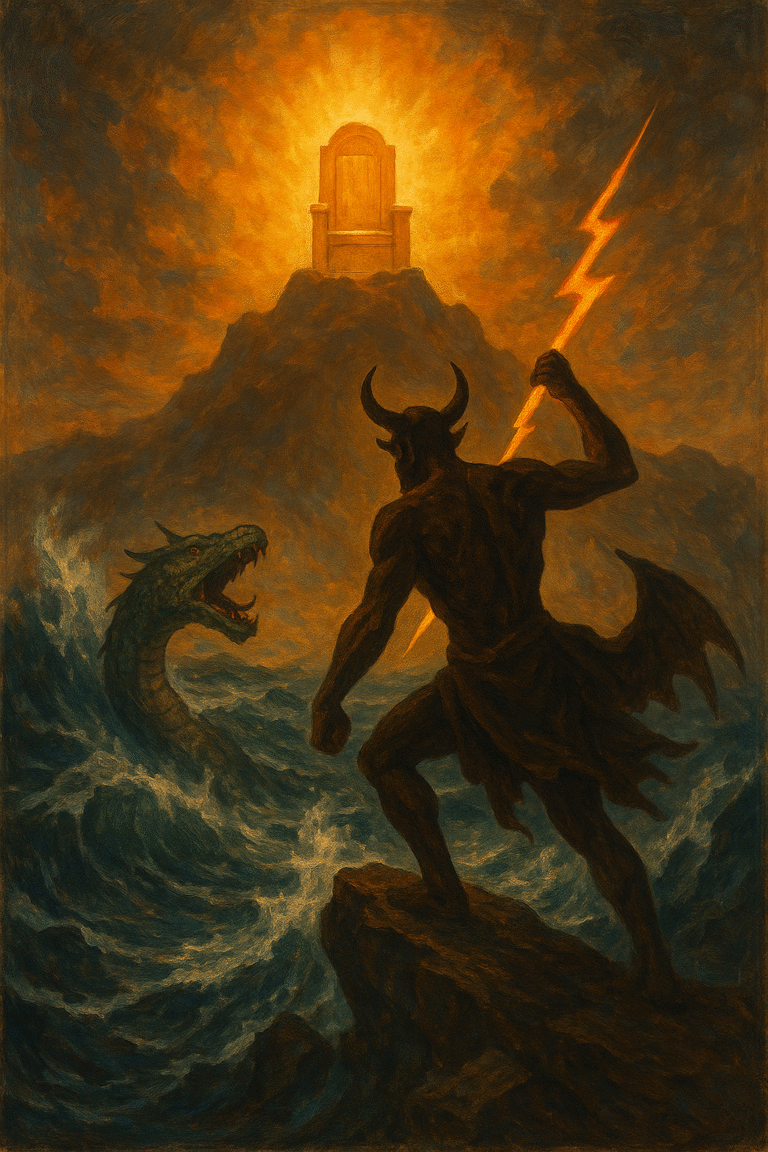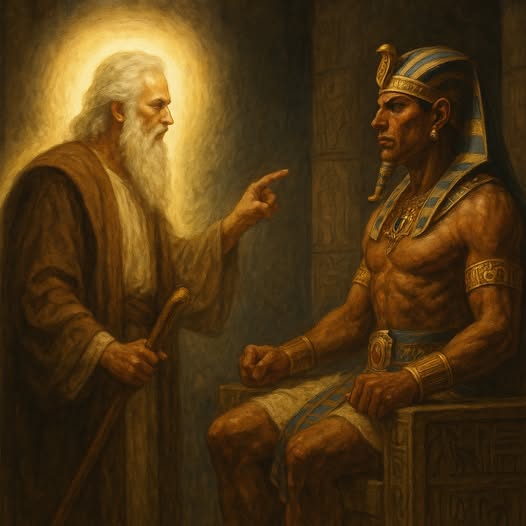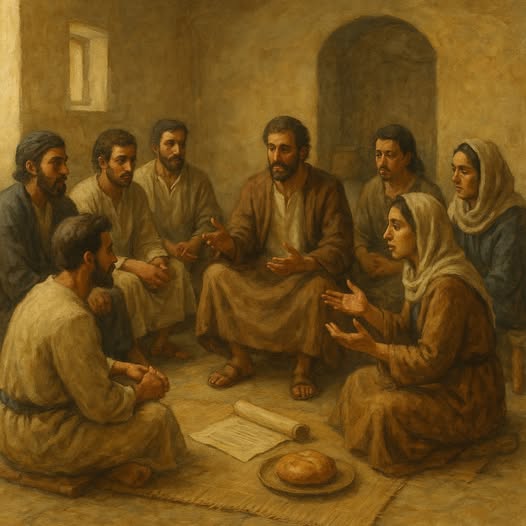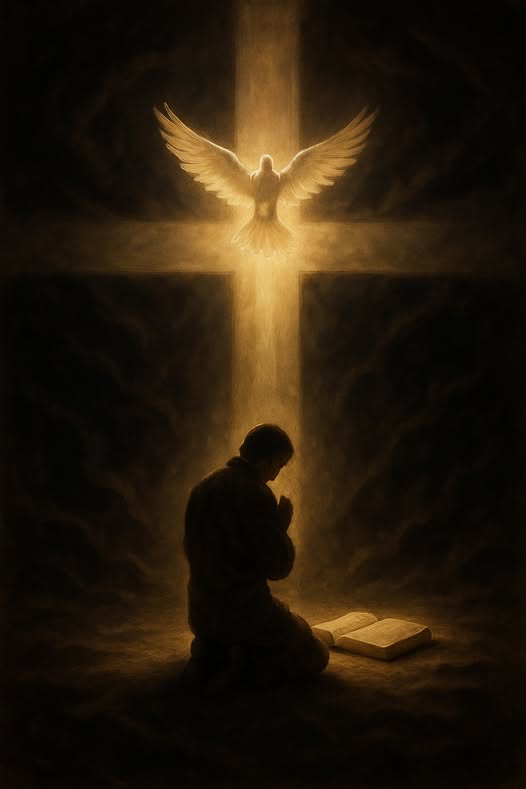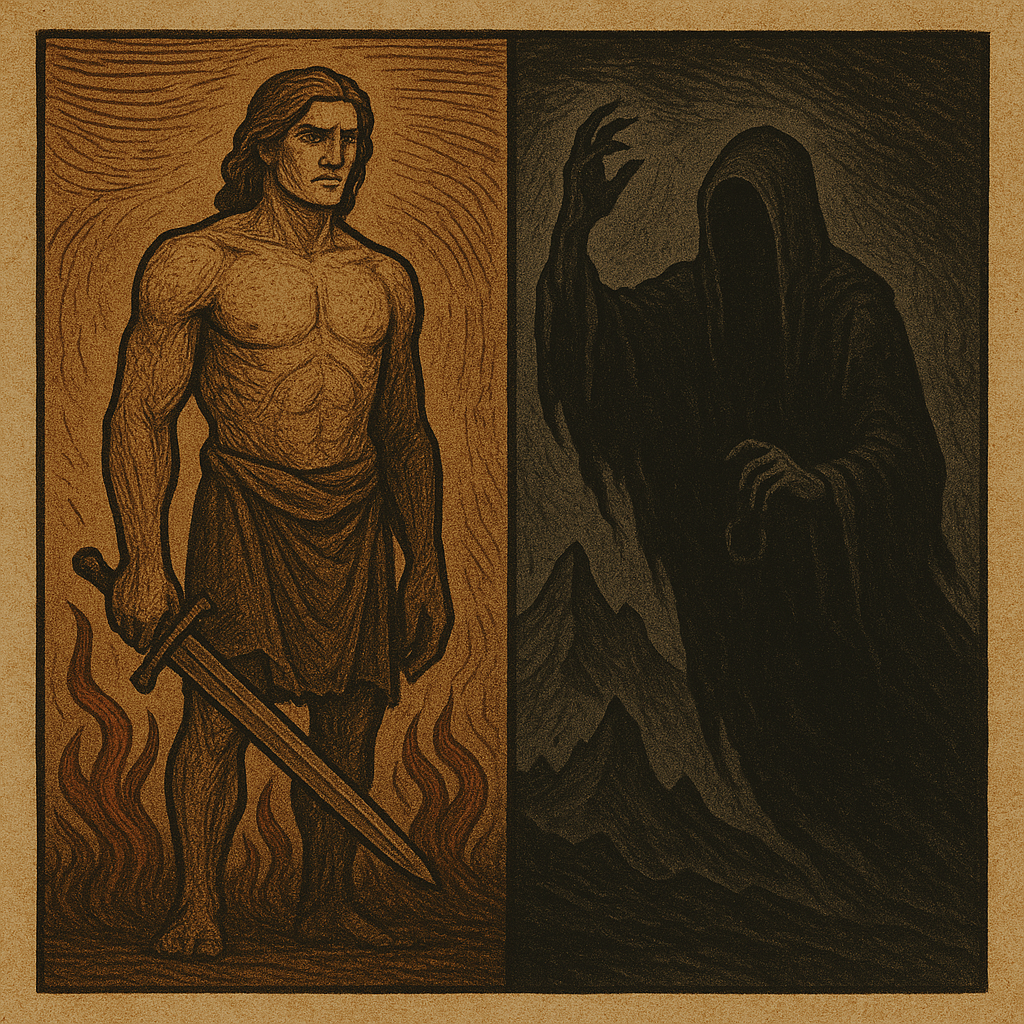
In Tolkien’s legendarium, the Nazgûl are among the most terrifying figures. Once mortal kings, they became wraiths bound to Sauron’s will through the power of the Nine Rings. Their transformation from men into something neither fully human nor fully spirit echoes an older biblical theme. In the traditions surrounding Genesis 6, the Nephilim were the unnatural offspring of heavenly beings who intruded into the human realm, creating hybrid giants through rebellion against divine order.
The Nazgûl represent a reverse pattern: men who were drawn into the spiritual realm not by divine design but through corrupted knowledge and a lust for power. Instead of being lifted up, they were hollowed out. What began as a promise of greatness ended in total enslavement.
Nephilim: Divine Beings Crossing Into Humanity
Genesis 6:1–4 describes the sons of God taking human wives, producing offspring called the Nephilim. These beings were the result of heavenly beings stepping into human boundaries. Their existence was an unnatural blending of two realms that God had intended to remain distinct. In biblical tradition, they became symbols of tyranny, violence, and rebellion, embodying a corruption of the created order.
Nazgûl: Humans Drawn Into Spiritual Corruption
The Nazgûl began as great kings of men who accepted rings of power from Sauron. Instead of receiving honor, they became enslaved. Through the Rings, they gained unnatural longevity, perception of the unseen realm, and power over others, but at the cost of their souls. They did not transcend their humanity, nor did they gain divinity. Instead, they were pulled upward into corruption, their spirits stretched thin until they became wraiths—neither dead nor truly alive, lingering in darkness and bound to the will of another.
Corrupted Knowledge
Another key parallel between the Nephilim and the Nazgûl lies in the way corrupted knowledge played a role in their creation. In 1 Enoch and related texts, the Watchers did not simply take human wives. They also revealed forbidden secrets to humanity—sorcery, weapon-making, enchantments, astrology, and other arts that distorted God’s good order. Their offspring, the Nephilim, embodied this corruption and spread violence across the earth.
The Nazgûl were likewise shaped by corrupted knowledge. The Nine Rings forged by Sauron contained hidden mastery designed to enslave. The kings who bore them gained insight into the unseen realm, unnatural longevity, and influence over others, but that secret wisdom hollowed them out until nothing of their humanity remained. In both cases, knowledge divorced from God’s authority and twisted toward rebellion did not bring freedom but bondage.
Loss of Identity
One of the most striking parallels between the Nephilim and the Nazgûl is the distortion, not erasure, of personal identity. The Nephilim are introduced in Genesis simply as “mighty men” and “men of renown,” a phrase that signals fame without faithfulness. Their individual names are not recorded in the biblical text, but later literature, such as the Book of Giants found among the Dead Sea Scrolls, assigns names like Gilgamesh. These names come from Mesopotamian tradition, where figures such as Gilgamesh were celebrated as semi-divine heroes. In Jewish polemic, however, these same names are subverted, turning celebrated culture heroes into icons of rebellion and corruption. Their memory becomes a warning rather than an honor.
The Nazgûl follow a similar pattern. In The Lord of the Rings, they are remembered only as the Nine. A few retain grim titles such as the Witch-king of Angmar or Khamûl, the Shadow of the East, but their original names, the ones they bore as men and kings, are lost. What remains are symbols of their servitude and degradation.
In both cases, identity is not preserved but twisted. The names that survive do not celebrate what they were but warn of what they became. Power pursued apart from God does not lead to lasting glory. It leads to a legacy of horror.
Boundaries of Life and Death
The Nephilim represent a grotesque entrance into life, born of a union that violated divine boundaries. When they died, their spirits were left trapped, unable to enter Sheol or ascend to heaven, condemned to wander the earth as destructive demons. The Nazgûl represent the opposite extreme, a grotesque refusal to enter death. Their wraith-like existence left them trapped between life and death, unable to die yet no longer truly alive. Together, these two images capture the danger of crossing the boundaries God has set: life becomes distorted, death becomes perverted into endless shadow, and what remains is enslavement to corruption.
Boundary Violations in Both Worlds
The connection lies in the crossing of boundaries God established. The Nephilim illustrate heavenly rebellion invading the earthly. The Nazgûl illustrate earthly rebellion lured upward into spiritual corruption. In both cases, the outcome is monstrous hybrids that destroy rather than preserve life. The Nephilim were remembered as mighty tyrants. The Nazgûl became enslaved kings, terrorizing Middle-earth at Sauron’s command. Both demonstrate how the violation of boundaries leads to ruin and bondage.
Conclusion
Seeing the Nazgûl as reverse Nephilim highlights Tolkien’s depth as a sub-creator. His mythology echoes biblical categories of rebellion and corruption, where the lust for power leads to the loss of true identity. The Nephilim and the Nazgûl alike remind us that when creatures step outside the limits set by their Creator, they are not elevated but enslaved. What begins as a grasp for greatness ends in shadow. The path of rebellion does not lead to divinity. It leads to ruin.
Symbolic parallels can make sermons engaging and even unforgettable. They awaken the imagination and help modern audiences see echoes of biblical truth in stories they already know. But there is a danger when the connection is not actually in the text itself. A sermon may become powerful and memorable, yet it does so by building on something Scripture never said. In those moments, the story can end up speaking louder than the passage. The result may inspire, but it is not faithful. At that point, creativity stops serving the Word and starts reshaping it.
While this comparison offers compelling insights, it is not intended to suggest that J.R.R. Tolkien deliberately modeled the Nazgûl after the Nephilim. There is no indication that he drew directly from Genesis 6 or Second Temple texts when creating them. This is a creative exploration of shared spiritual themes, not an argument for authorial intent. It is a tool for reflection, not a foundation for doctrine.
Discussion Questions
- What similarities and differences stand out between the Nephilim of Genesis 6 and Tolkien’s Nazgûl, especially in how each represents boundary-crossing rebellion?
- How do the themes of corrupted knowledge in both the Watchers’ teaching (1 Enoch) and the Nine Rings of Power illustrate the dangers of seeking wisdom apart from God?
- In what ways does the loss of identity—whether through nameless infamy or spectral servitude—serve as a warning about the cost of rebellion?
- How can creative comparisons between Scripture and modern stories help us better understand spiritual truths, and where should we draw the line to avoid distorting the message of the Bible?
- What does this exercise reveal about the difference between illustration and eisegesis, and why is it important to guard against reading ideas into Scripture that were never there in the first place?
Want to Know More?
- Michael S. Heiser, Reversing Hermon: Enoch, the Watchers, and the Forgotten Mission of Jesus Christ (2017)
This book explores how the events of Genesis 6, especially as expanded in 1 Enoch, influenced early Christian theology. Heiser offers deep insight into the Nephilim, the Watchers, and their spiritual implications, making it an essential resource for understanding the biblical half of the comparison. - T.A. Perry, God’s Twilight Zone: Wisdom in the Hebrew Bible (2008)
Perry examines themes of boundary-crossing, corrupted wisdom, and forbidden knowledge throughout the Old Testament. This work is useful for contextualizing the biblical warnings against transgressing divinely established limits. - Tolkien, J.R.R., The Silmarillion, edited by Christopher Tolkien (1977)
This posthumously published work provides foundational background on Sauron, the Rings of Power, and the broader mythology of Middle-earth. It helps readers understand the metaphysical structure Tolkien imagined, even if he did not draw from Genesis 6 directly. - Tom Shippey, The Road to Middle-earth: How J.R.R. Tolkien Created a New Mythology (2005)
Shippey is one of the foremost Tolkien scholars. This book explores how Tolkien constructed his mythic world and which ancient texts and themes may have indirectly influenced him. It’s useful for discerning what Tolkien intended—and what he likely didn’t. - Loren T. Stuckenbruck, The Myth of Rebellious Angels: Studies in Second Temple Judaism and New Testament Texts (2014)
A scholarly but accessible study of how Second Temple texts (like 1 Enoch) treated the fallen angels and their offspring. It clarifies the role of the Nephilim in Jewish thought and provides context for their later demonization.

